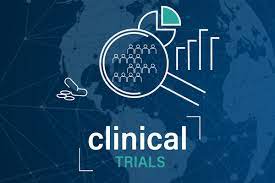Clinical trials are the cornerstone of medical research, ensuring that new treatments, drugs, and medical devices are both safe and effective before they are made available to the public. These trials are conducted in sequential phases, each with distinct objectives and methodologies. In this blog, we delve into the four phases of clinical trials and their critical roles in advancing healthcare.
What Are Clinical Trial Phases?
Clinical trial phases are structured steps in the research process, designed to answer specific questions about a new treatment’s safety, efficacy, and long-term impact. Each phase builds on the findings of the previous one, progressively expanding the scope and scale of the research.Phase I: Safety and Dosage Testing
Purpose:
- To evaluate the safety of a new drug or treatment.
- To determine the optimal dosage range and method of administration.
Key Features:
- Involves a small group of 20-100 healthy volunteers or patients.
- Focuses on identifying side effects and establishing safe dosage levels.
- Typically lasts several months.
Outcome:
If the treatment is deemed safe, it progresses to Phase II for further evaluation.Phase II: Efficacy and Side Effects
Purpose:
- To assess the effectiveness of the treatment for a specific condition.
- To monitor for adverse reactions in a larger patient group.
Key Features:
- Involves 100-300 participants who have the condition being studied.
- Conducted over several months to two years.
- May compare the new treatment to a placebo or existing standard of care.
Outcome:
Data from Phase II trials determine whether the treatment is effective enough to proceed to Phase III.Phase III: Large-Scale Testing and Comparison
Purpose:
- To confirm the treatment’s effectiveness on a larger scale.
- To monitor side effects and compare the treatment’s performance to existing therapies.
Key Features:
- Involves 300-3,000 participants across multiple locations.
- Employs randomized, double-blind, and placebo-controlled methods to ensure robust data.
- Can last from one to four years.
Outcome:
Successful Phase III trials lead to the submission of data to regulatory authorities (e.g., FDA, EMA) for approval.Phase IV: Post-Market Surveillance
Purpose:
- To monitor the long-term safety and effectiveness of an approved treatment.
- To gather additional data on optimal use, rare side effects, and real-world performance.
Key Features:
- Conducted after the treatment is approved and available to the public.
- Involves thousands of participants in diverse populations.
- May uncover rare side effects not observed in earlier phases.
Outcome:
Phase IV data help refine treatment guidelines and ensure ongoing patient safety.Related Posts:
- Retinal Gene Therapy Market Report: Challenges & Growth 2024-2034
- BioSkryb Genomics Launches Next-Gen MRD Discovery Solution
- Tenvie Therapeutics Launches with $200M for Breakthrough Therapies










